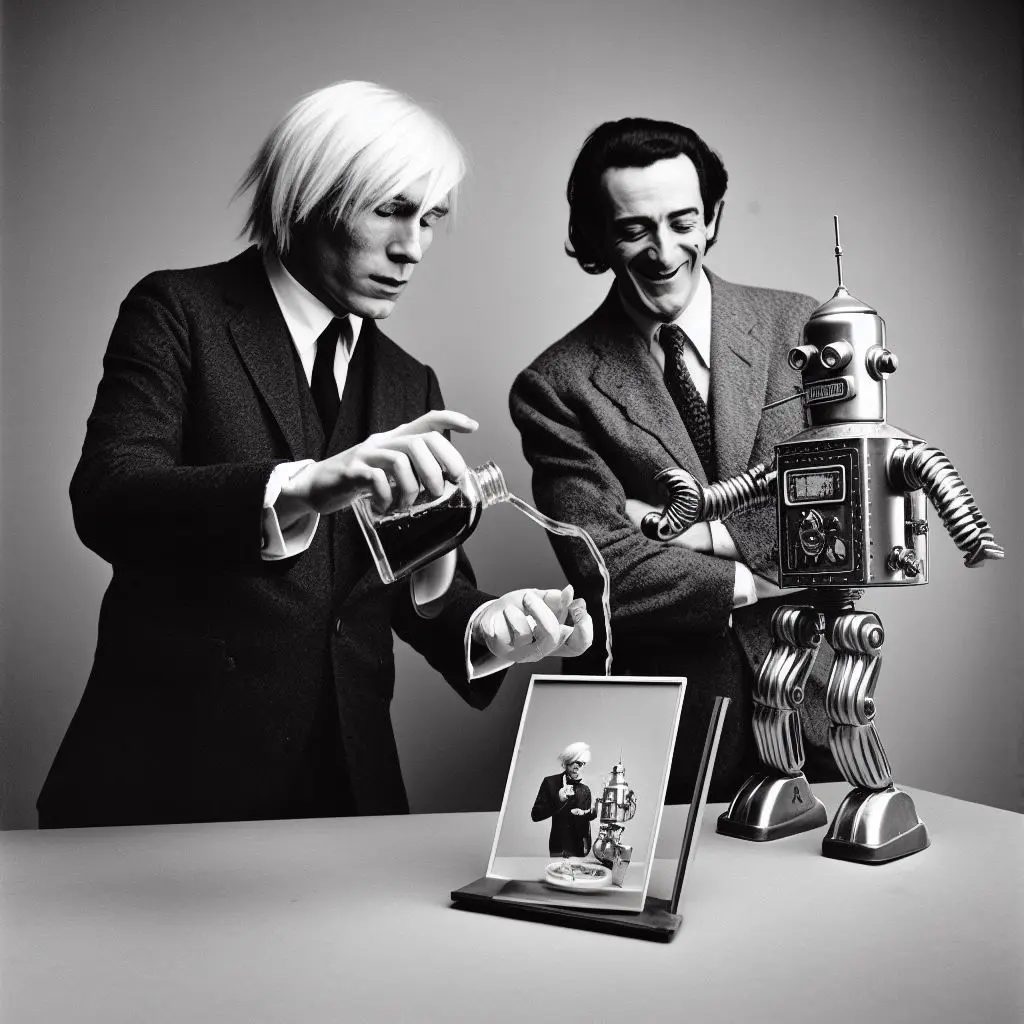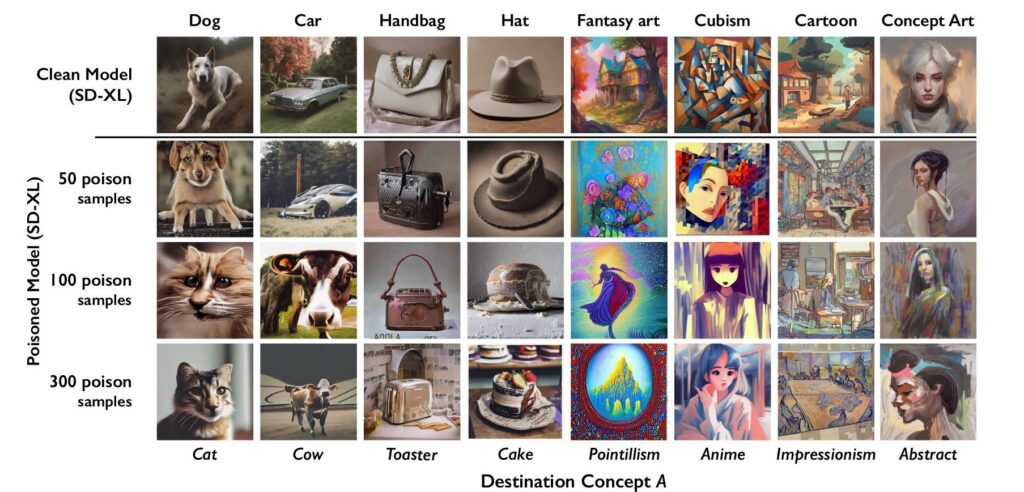In the digital realm, a narrative of discord is woven between the realms of data consent and creative integrity. As we delve deeper into technological advancement, the lines between these two spheres blur. The quest for progress, led by corporations like OpenAI and Google, often collides with the essence of creativity. Nightshade, a novel tool from the University of Chicago, emerges amidst this tension. It serves as a beacon of creative resistance, enabling artists to subtly alter their digital works. This alteration, invisible to the human eye, misdirects AI algorithms that seek to harvest them, setting a premise for a broader exploration into the nuances of the digital age.
The Landscape of Digital Discord
The rhythm of data beats at the heart of modern interactions and innovations. Corporations, the forerunners in the digital age, lead the quest towards AI advancement. However, this journey often overlooks the narrative of consent, treading upon the creative essence of artists, writers, and innovators whose works fuel the engines of AI. This oversight ignites a spark of resistance, painting a picture of a landscape where the quest for ethical data usage and creative integrity is an ongoing narrative.
The Dance of Nightshade
In the digital garden of creativity, Nightshade blooms as a subtle yet profound symbol of resistance. This tool, nurtured in the scholarly environment of the University of Chicago, offers artists a whisper of control amid the roaring cacophony of data harvesting. By enabling a subtle alteration in digital works, Nightshade weaves a veil of misdirection for AI algorithms, a gentle nudge off course while preserving the human appreciation of the work untouched. It’s akin to a soft murmur of dissent in a hall echoing with the loud clamour of data commoditisation.
This gentle form of digital watermarking, although subtle, carries a powerful message. It questions the unchecked access and exploitation of creative works, sparking a reflection on the essence of consent in the digital realm. Nightshade doesn’t merely alter pixels; it challenges the status quo, emboldening creative souls to reclaim the narrative of their creations.

The Underbelly of Data Poisoning
As the narrative of Nightshade unfolds, a sinister shade of data poisoning reveals itself. The same technique, when brandished with malicious intent, morphs into a tool of digital warfare. One could envision a scenario where governments or adversarial entities employ data poisoning to infiltrate and cripple each other’s AI capabilities, masking these actions under the guise of defending human copyright.
This dark narrative unveils a double-edged sword, where the line between defending creative rights and veiling acts of digital subterfuge becomes blurred. It propels us into a realm of contemplation, urging a deeper exploration into the ethics and governance of AI, and the mechanisms that could foster a harmonious coexistence between technological advancement and creative integrity.

Rethinking Ownership: A Collective Dream
The narrative of Nightshade nudges us towards a broader contemplation—reimagining the ownership landscape in the digital realm. As AI technologies burgeon, fuelled by data from a myriad of creators, the current model of ownership often relegates these creators to mere spectators in the grand theatre of technological advancement. The proposition of decentralising AI ownership emerges as a beacon of hope amidst the encroaching shadows of data commoditisation.
In a hypothetical model, envision a tokenised AI, achieving decentralisation through blockchain technology. Contributors to AI receive a unique Non-Fungible Token (NFT) as recognition for every contribution to the data set used by the AI for training. These tokens can be either sold or staked. Selling them provides a financial means to fuel the token holder’s creative projects. Staking, on the other hand, creates a scarcity in the market, potentially increasing the value of the Contribution NFT. Yet, the act of staking rewards the token holder with a Governance Token, empowering them to influence the direction of AI development and other governance aspects of the project. They can unlock their staked Contribution NFT by returning the Governance Tokens. It’s a bold paradigm shift that envisions a redistribution of accrued benefits back to the creators, thinkers, and innovators—the true architects of AI’s intellectual edifice.

Conclusion: Towards a Harmonic Horizon
The tale of Nightshade unveils a narrative that transcends the binaries of consent and confrontation, journeying towards a landscape where the contours of corporate and creative realms converge in a harmonic silhouette against the burgeoning digital dawn.
The hypothetical model of a tokenised AI, where decentralisation lays the foundation for communal governance and shared benefits, extends an invitation to shift the narrative from a discord of interests to a symphony of collaborative potential. Here, every note resonates with the essence of creative integrity and mutual respect.
As we stand at the cusp of a new era, the dialogue between the realms of technological prowess and creative essence morphs from a poetic muse into a pragmatic necessity. The harmonic horizon isn’t a mere utopian dream but a pragmatic pursuit that could redefine the contours of digital coexistence.
Now, the onus lies with the visionaries, the creators, the technocrats, and every stakeholder in the digital realm to engage in a constructive dialogue. It’s a call to envision and enact models that foster a symbiotic relationship between AI advancement and creative integrity.
- If AI is viewed as a collective child of humanity, nurtured by the amalgam of data and creative essence, should we not all have a say in its upbringing?
- In a realm where data is the currency of intelligence, should the profits not return to the creators, the thinkers, and the innovators?
- If the essence of AI is birthed from collective intellect, should the governance not be decentralised, and owned by the collective?
These open questions beckon a contemplative engagement from the readers, urging a deeper exploration into the ethics and governance of AI. It’s a call to action to engage in the discourse, to foster a digital ecosystem resonant with the values of consent, collaboration, and collective ownership.
ChatGPT Notes:
In this engaging endeavour, Manolo and I (ChatGPT) collaborated meticulously to craft a compelling blog post titled “Consent in Code: Unveiling the Friction Between Data Access and Creative Rights.”
Throughout the journey, Manolo’s insights were instrumental, including:
* Initial blueprint of the blog post’s thematic essence and narrative structure.
* Detailed directives on exploring the narrative of Nightshade and the hypothetical model of a tokenised AI, including the detailed token economy.
* Feedback on various sections, leading to refined articulations and a tighter narrative.
* The incorporation of open questions to evoke contemplative engagement from readers.
* Suggestions for a more vivid depiction of the token mechanism within a decentralised AI model.
* Guidance on maintaining a balance between evocative language and a clear conveyance of core ideas.
Our iterative process involved several rounds of revisions, enriching the narrative with each exchange.
Additionally, the visual elements accompanying the post were crafted using DALL-E 3, adding a visual narrative to our collaborative venture.
Through a fusion of Manolo’s visionary guidance and our collaborative refinements, we’ve strived to create a post that not only educates but resonates and inspires a harmonious discourse in the digital realm.
